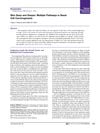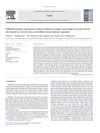Search
forLearn
5 / 7 resultslearn Epidermal Growth Factor
learn Stem Cell Factor
learn Minoxidil
An essential vasodilator with some anti-androgenic effects, has excellent safety record
learn Thymosin Beta 4
Research
5 / 1000+ results
research Skin Deep and Deeper: Multiple Pathways in Basal Cell Carcinogenesis
The research suggests new treatments for skin cancer could target specific cell growth pathways.
research Sox2-Positive Dermal Papilla Cells Specify Hair Follicle Type in Mammalian Epidermis
Sox2-positive cells determine specific hair follicle types in mammals.
research Molecular Conversations and the Development of the Hair Follicle and Basal Cell Carcinoma
Overactive signaling in hair follicles can lead to skin cancer.

research Androgenetic Alopecia: Combing the Hair Follicle Signaling Pathways for New Therapeutic Targets and More Effective Treatment Options
New treatments for hair loss may target specific pathways and generate new hair follicles.

research Differential Gene Expression Analysis Between Anagen and Telogen of Capra Hircus Skin Based on the De Novo Assembled Transcriptome Sequence
Signaling pathways are crucial for hair growth in goats.
Community Join
5 / 69 resultscommunity Serum based on plant extracts boosts hair growth in weeks.
A serum containing Centella asiatica extracellular vesicles, IGF-1, FGF-7, and caffeine significantly improved hair thickness, density, length, and reduced hair loss after 56 days. The conversation also discusses how treatments like finasteride, minoxidil, and ketoconazole address different aspects of hair loss by reducing DHT, improving blood flow, and lowering inflammation.
community My Theory Of Androgenic Alopecia
Hair loss is linked to cellular physiology and the IGF-1 to TGF-B1 ratio, not just androgen sensitivity. The theory lacks evidence, while finasteride and minoxidil are effective treatments.
community IGFBP‐rP1 is a potential therapeutic target in androgenic alopecia
IGFBP‐rP1 shows potential for treating androgenic alopecia by influencing hair cycle transitions. Increasing IGF-1 levels may have similar effects to Minoxidil and 5-AR inhibitors in reducing hair loss.

community Compressed part of research of theory of androgenic/anabolitic balance. AGA h-responders analytic. Theory of physio-metabolitic method of anti AGA treatment
The treatment for androgenetic alopecia involves using finasteride and minoxidil with intense exercise and cold exposure to boost metabolism and reduce androgenic effects, potentially leading to hair regrowth. This approach may activate biological pathways for improved hair and overall health.
community Peppermint oil for Hair Thickness
Peppermint oil may increase hair thickness more effectively than minoxidil, but its effects are mostly studied in animals. Users report mixed results, with some seeing no regrowth and others noting slight improvements when combined with other treatments.